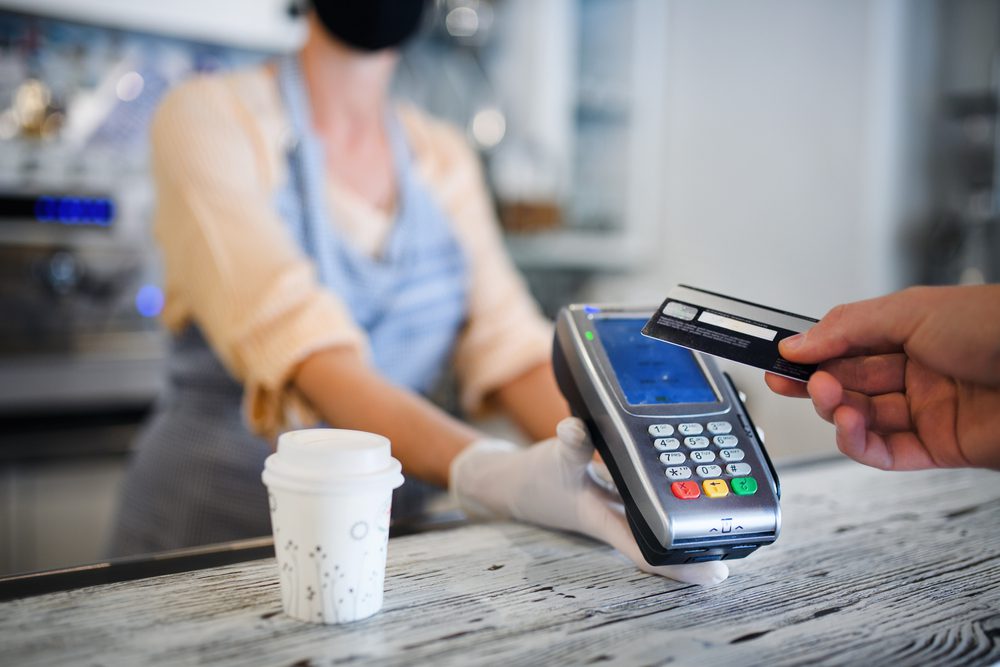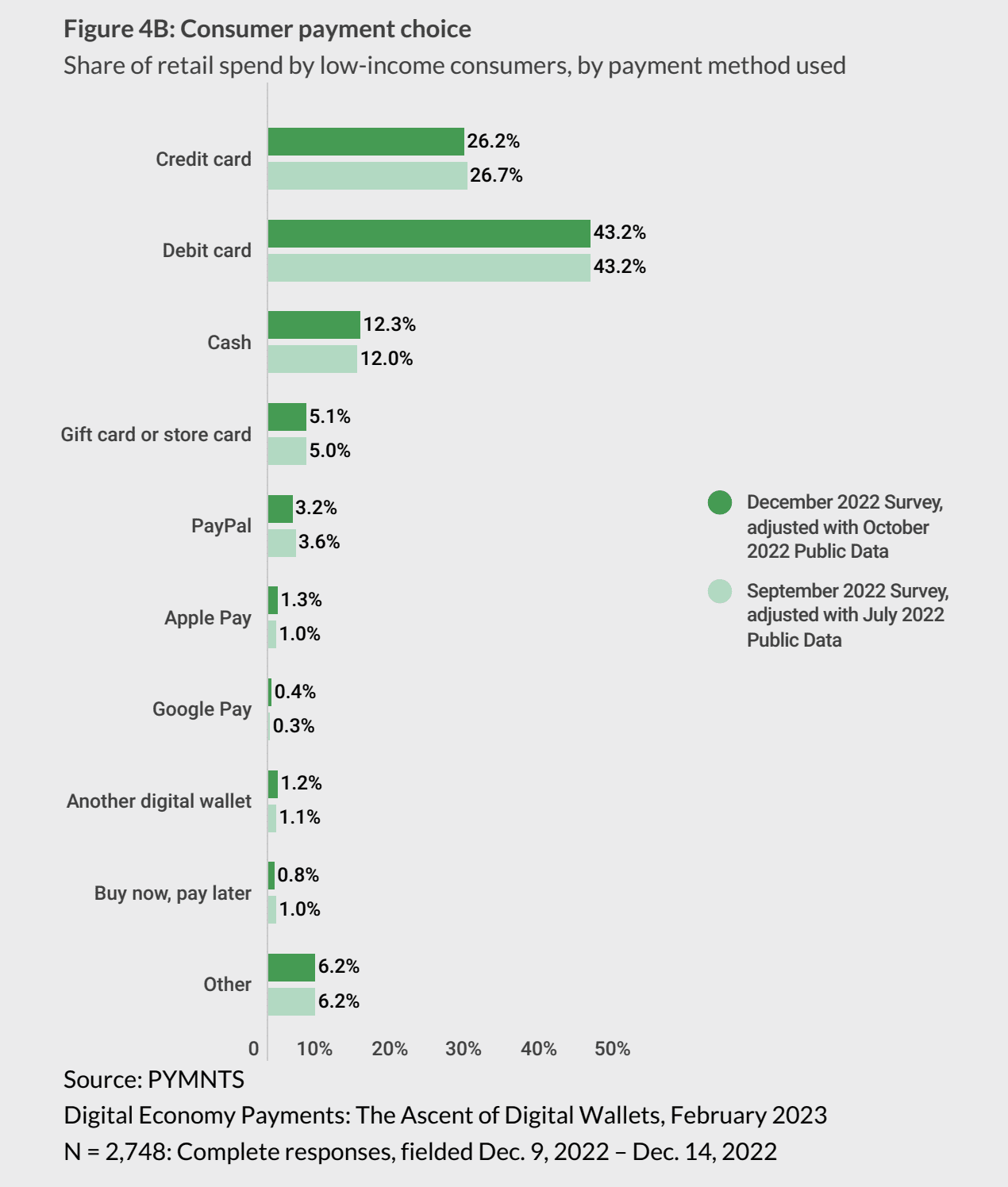Half of Low-Income Consumers Pay With Debit and PayPal

The payment methods favored by those on stable financial footing compared to those struggling to meet bills is often a tale of living strictly within one’s means or having the freedom to use the bank’s money — as is the case in the defining line between credit and debit use.
Exploring this in the PYMNTS study Digital Economy Payments: The Ascent of Digital Wallets based on surveys of over 2,700 U.S. consumers, we see the divide clearly represented in go-to cards used by consumers who dwell at different places along the financial lifestyle spectrum.

From a high-level view, we see that high-income consumers — those making more than $100,000 — were far more likely to pay with a credit card than low-income consumers were in December 2022. By contrast, low-income consumers — those earning less than $50,000 — were more likely to pay via debit card and PayPal.
Our Q4 2022 data reveals that “debit cards and cash represent more than half of the total amount spent by low-income consumers for all retail purchases.” Looking deeper into the details of those purchases, debit cards dominate for everyday essentials like groceries, “leaving little room for alternative payment methods. Consumers used debit cards to pay for 43% of in-store grocery retail sales and 40% of online grocery sales in the last 12 months. Credit cards maintained a 31% share of all grocery retail this quarter, both online and in-store.”
Turning to middle- and high-income consumers, the data shows these groupings gravitating toward heavy credit card use, paying more than one-third of their retail expenses with credit cards. Additionally, our findings show that high-income consumers paid more often with nontraditional payment methods.
Per the study, in the 12 months before December 2022, “high-income consumers also paid with nontraditional payment methods more often, with PayPal making up 8.5% of all their retail purchases, Apple Pay 3.5% and Google Pay 2.1%. BNPL is more popular among middle-income consumers, who paid for 1.5% of all their retail purchases this way.”
Get the Study: Digital Economy Payments: The Ascent of Digital Wallets

